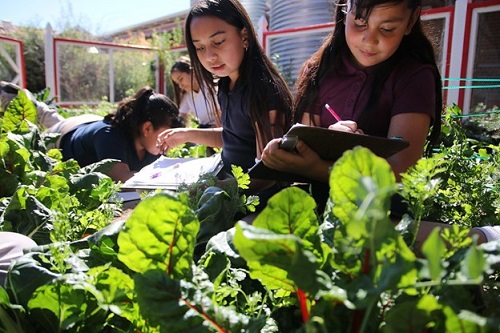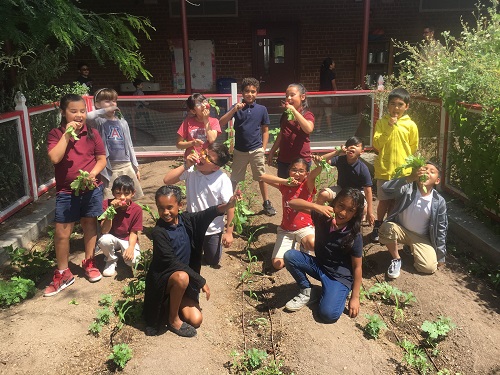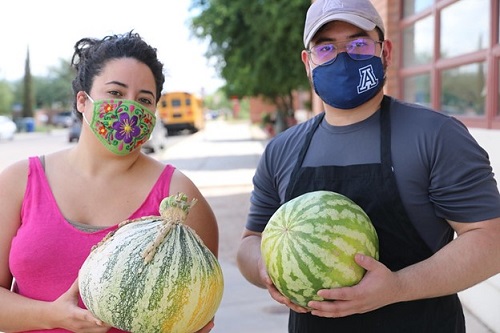In the Sonoran Desert is the city of Tucson, AZ, where the average rainfall is just 10 inches per year and summer temperatures often go above 100 degrees. While the desert can be a challenging environment for both people and vegetation alike, your expectations of what a desert garden would look like will be pleasantly surprised as you enter the vibrant garden of Manzo Elementary. The color of the dark green plants pop against the contrast of the red and brown desert soil as the lush garden invites you in.
Manzo Elementary started off as a small grassroots program that had big dreams. Pioneered by school counselor, Moses Thompson, his aim was to create an interactive space that would be a safe place for kids to be outside, where they could learn by doing, and practice taking ownership and responsibility.

The garden operates with three core goals:
- To teach the kids about the culture and practices of the indigenous people that inhabited the land before them
- To improve students’ mental health during and after the pandemic
- To promote food education and access
One of the main principles of the Manzo Garden is to honor and and share indigenous peoples’ knowledge, use of culturally traditional plants, and gardening techniques. The Sprouts Healthy Community Foundation wanted to promote this idea and awarded Manzo Elementary with a Neighborhood Grant of $10,000 in 2021 to support the creation of the “Southwest Eco-Region School Gardeners’ Almanac.” The almanac was crafted as a blueprint for gardening in the Southwest and showcases native plants that are key to desert ecosystems. These plants can tolerate high heat and require little water which makes the gardens more sustainable and resilient. The almanac also promoted the use of indigenous knowledge such as planting times, the five seasons of the desert and the use of medicinal plants. Teaching students with this almanac brings them closer to their cultural roots and the native people who have made the Sonoran Desert their home for centuries.

During the height of the pandemic, the garden was also used as a mental health tool, serving as an outlet for students. It was a space to practice mindfulness, develop social and emotional learning and a place for teachers to offer additional intervention for children who needed it. This aspect of the garden has been so impactful that Manzo was awarded a National Science Foundation grant to look at the mental health effects of the pandemic and using school gardens as a therapeutic tool.
Finally, food education is a major part of the learning curriculum at Manzo. Through culinary demos and tastings of the garden produce, educators teach students the importance of healthy eating. The students are also encouraged to participate in the school’s farmers market, where the funds go back to into supporting the garden, and any leftover produce is donated to the school cafeteria.

With these values as a foundation, combined with hard work and planning, Manzo’s garden began to grow. It has since expanded into a garden network along with surrounding schools, and there’s now a planned flow for local elementary, middle, and high schools to all have a garden component in their curriculum. The final step is at the collegiate level with the University of Arizona. The UA created a school garden program where university students learn about horticulture, and then through their internships, they work with 15-20 different school gardens in providing support, guidance, knowledge, and sustainability.

Back at Manzo, this once small garden has blossomed into a large garden with succulents, a chicken coup, a rainwater catcher, and a research-driven agrivoltaics system. Manzo’s ultimate vision now is to partner with other schools across the country, teaching them how to create their own garden networks and almanacs that promote regional growing practices, indigenous peoples and traditions, and native plants, so their gardens, and appreciation of the land, will also continue to grow.
View Manzo’s Southwest Eco-Region School Gardeners’ Almanac here.


